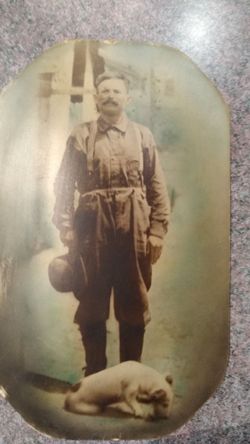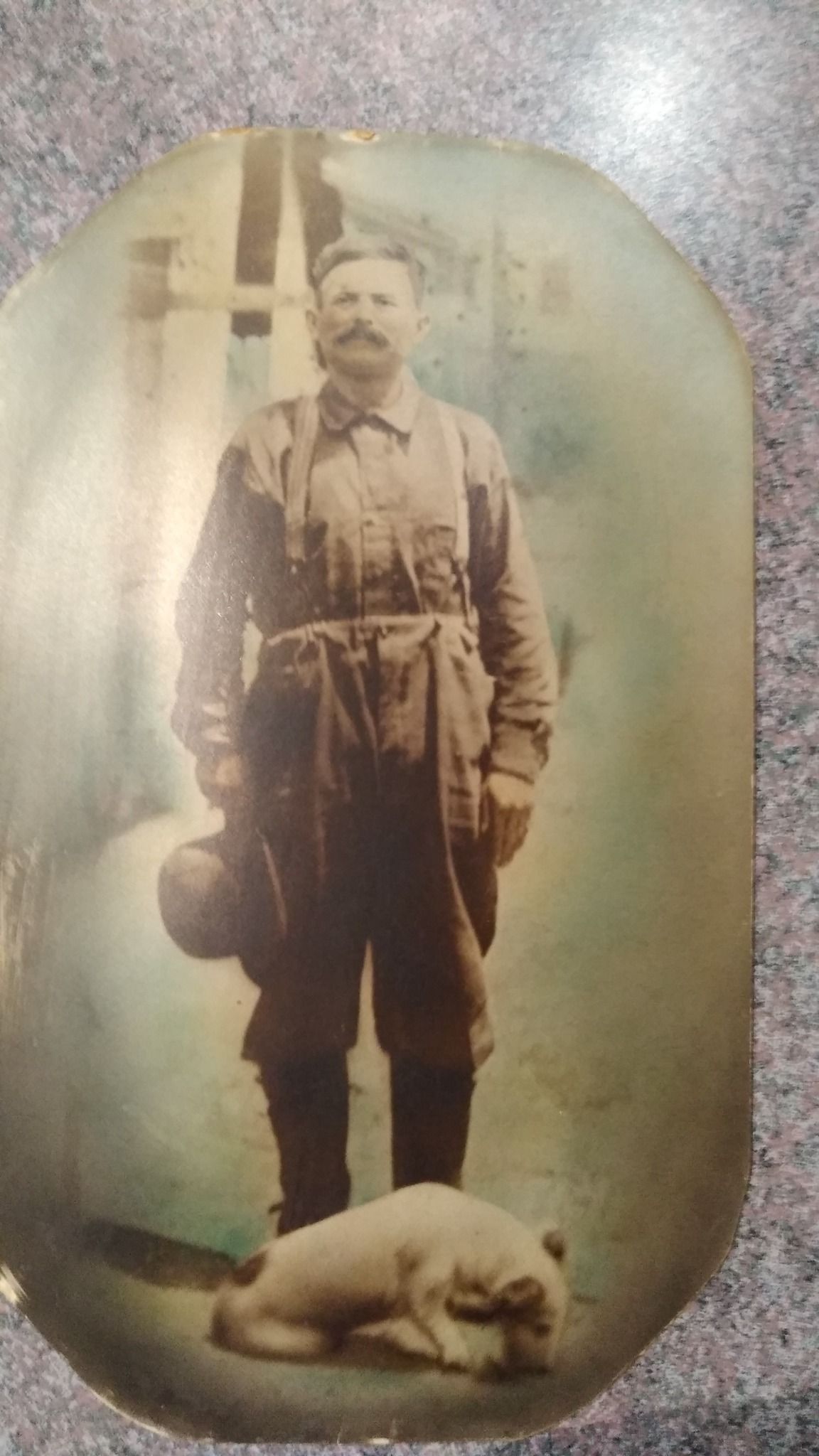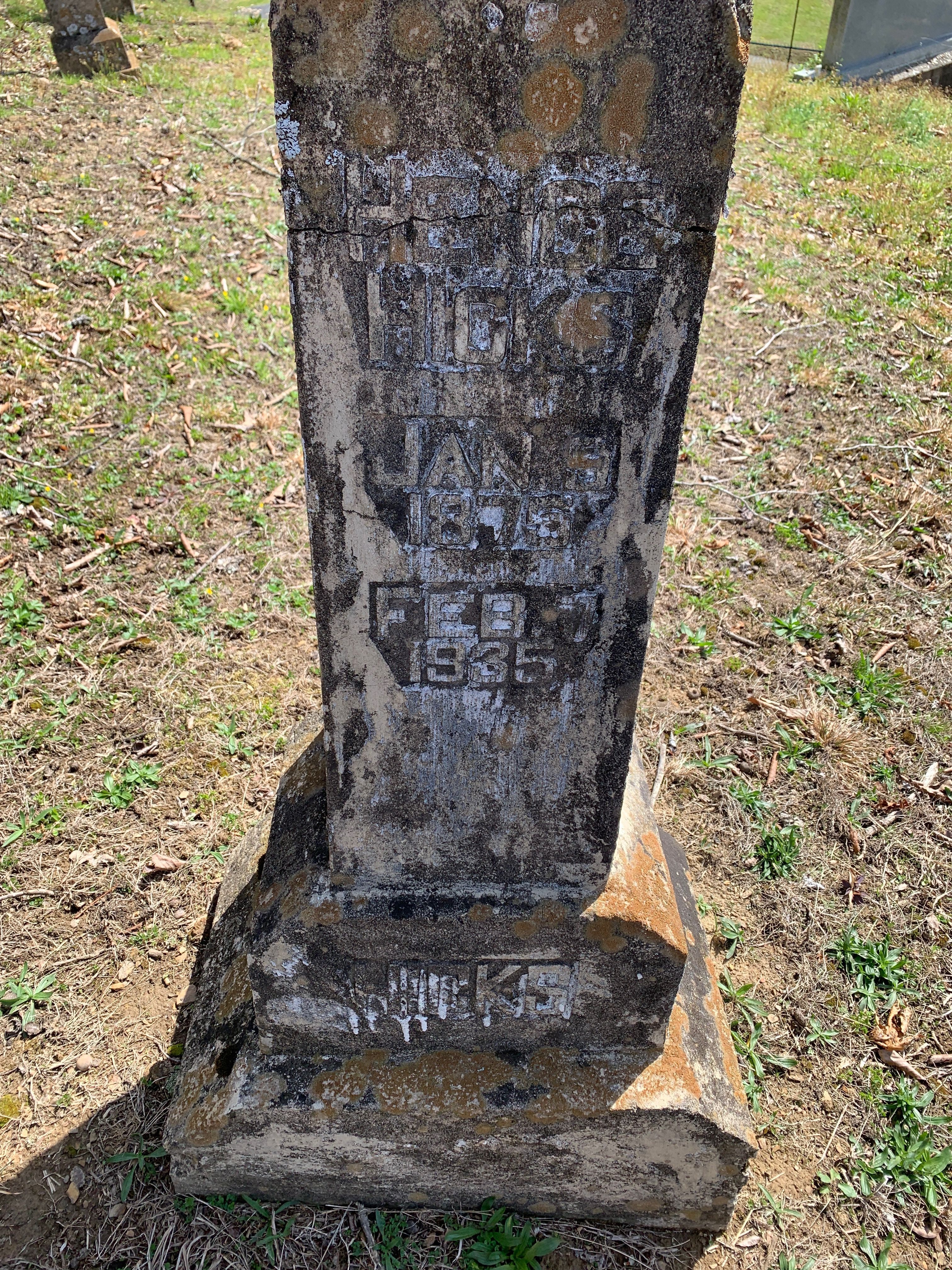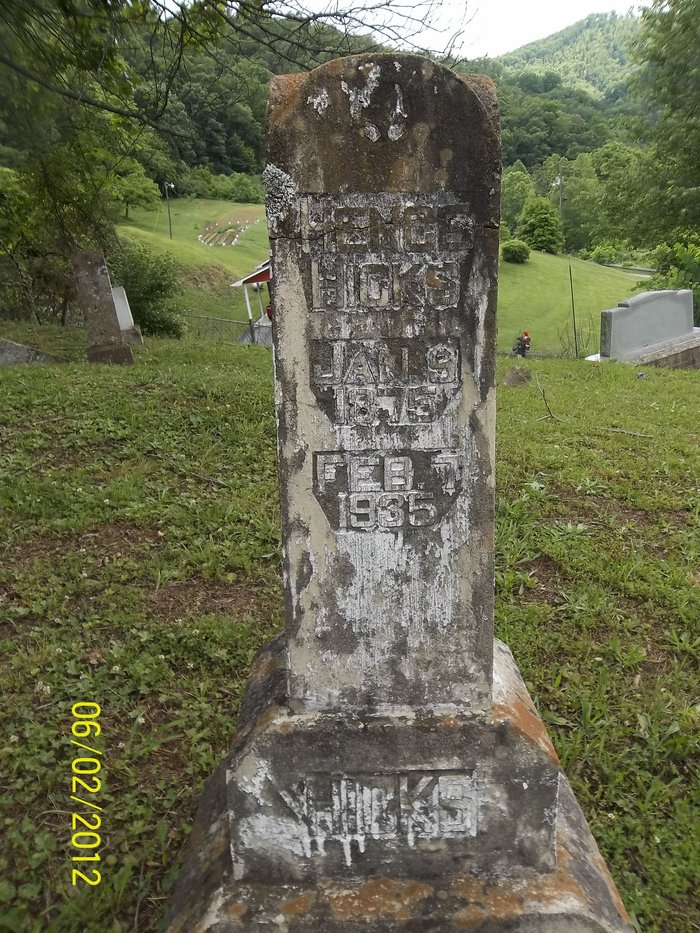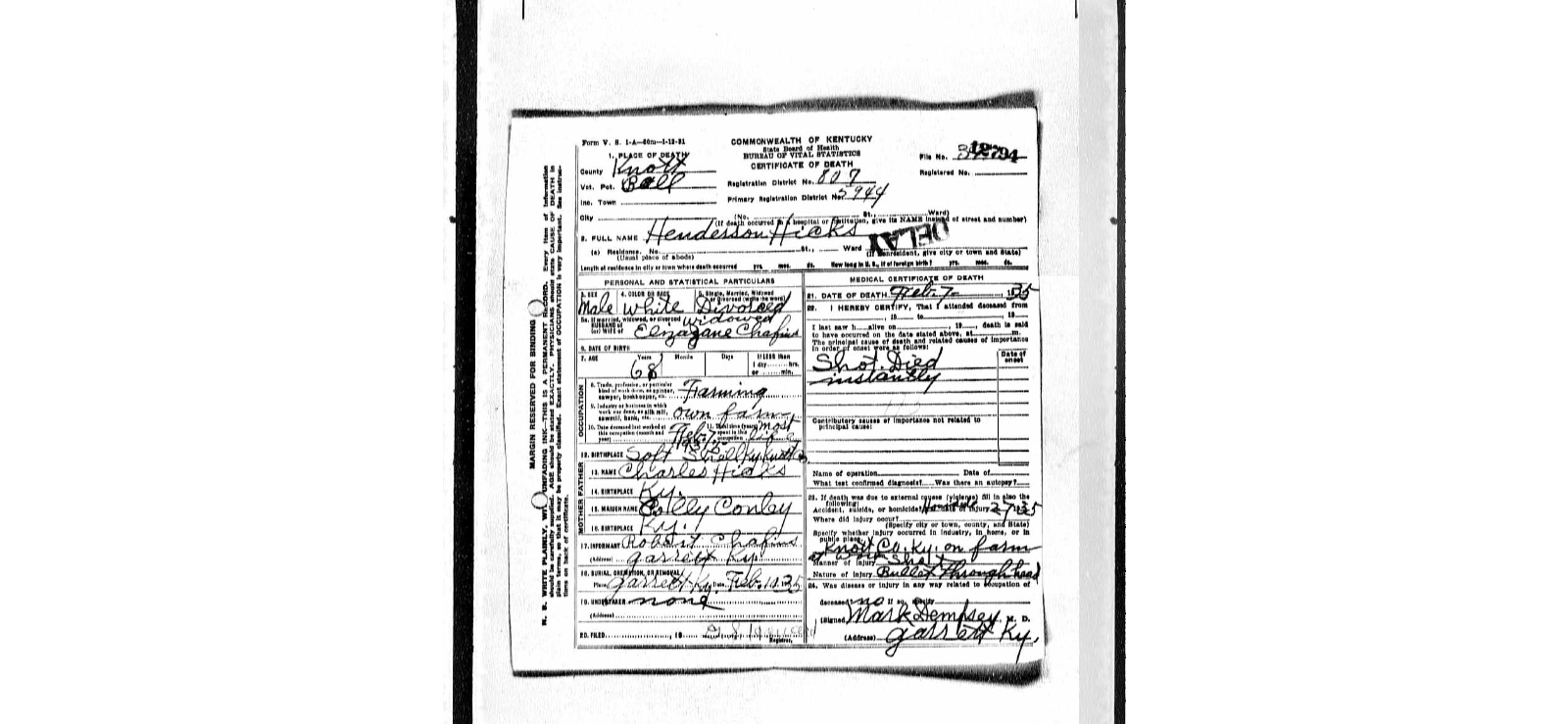According to the newspaper records, the Knott County Sheriff Henry Sturgill almost immediately arrested six men primarily because they suddenly had money and had previously had none. "The report received here says that Estill Conley had until the day following discovery of Hicks' body been prevented by lack of money from marrying a Fitzpatrick girl, but soon thereafter gave a friend money to go to Hindman and procure a marriage license. Floyd County Times, March 8, 1935." The newspaper and verbal stories this writer heard during his childhood from both his parents, Ballard and Mellie Hicks, and his maternal grandparents, Woots and Susie Hicks, all agree that Hence Hicks had hidden in his hatband a sum of money which all sources agree was $4,100 dollars. That was a phenomenal sum of money for an elderly farmer in Knott County to have had in early 1935 in the heart of the great depression. Franklin D. Roosevelt had only been inaugurated as President on March 4, 1933, and the work of economic recovery was still in its relatively early stages. The newspaper describes Hence Hicks in very positive terms in every story about the case. He is variously described as having accrued the money "...from hard labor and strict frugality..." To put it bluntly, Hence Hicks had managed to scratch $4,100 out of the hard, rocky ground of Knott County during the Great Depression and to own his own farm. The newspaper further describes Hence Hicks as "...a peaceable citizen and held the respect of all who knew him."
The newspaper story of March 8, 1935, discussed the murder in both graphic and extensive detail. "A 22 caliber rifle bullet had been fired into the back of his head, the missile passing through his brain and emerging above his forehead. Authorities believe he did not see his slayer. The murder aroused considerable feeling in Knott County, it is reported, and an investigation was immediately begun by officers. When five or six men were found in possession of money, a circumstance strange to them, they were nabbed as suspects...Circuit Judge John W. Caudill here said that a detective should be placed at work on the case which has many babbling(sp) aspects and Knott County officials are expected to follow his suggestion"
The March 1, 1935, edition of the Floyd County Times was actually the first print mention of the murder. It states that Estill Conley and Elisha Bolen were denied bond and that one of the other four who had been arrested was released under $5,000 bond which was a relatively large amount of bond money at that time. All the other suspects had been released and none other than Conley and Bolen were ever tried. The March 1, 1935, story also states that a grand jury investigation would begin the following Monday. That story continues to say that Hence Hicks had been a former resident of Garrett in Floyd County.
The Knott County Circuit Court records state that on March 26, 1935, the case was called for trial. Attorneys for both defendants entered motions that the cases be separated and Judge Caudill sustained that motion. The Commonwealth Attorney O. C. Hall elected to try Estill Conley first and a jury was seated composed of the following men: John Back, Bob Everage, Lester Day, Victor Allen, Joe Richie, Bill Day, Alex Hale, John Sparkman, Punch Everage, and Monroe Thomas "...which exhausted the regular panel. It is ordered by the court that Henry Sturgill, Sheriff of Knott County, summons enough persons to complete the jury. Thereupon came Henry Sturgill, Sheriff of Knott County and turned into court the following: John Watts and Charley Perkins, which completed the jury, who was accepted by the parties, empaneled sworn to well and truly try the issue and a true verdict render according to the law and evidence." The Court Reporter was listed as Hassie Hicks without any comment as to whether or not that officer of the court was or was not related to the victim. The indictment was read by the Commonwealth Attorney O. C. Hall and court was adjourned for lunch. Some unspecified evidence was introduced by the Commonwealth and the trial was adjourned until the following morning. At 7o'clock (presumably 7pm), the jury was given the case. On March 29, 1935, the trial was concluded and the jury returned a verdict against Estill Conley of guilty of murder and set the sentence as life in the State Reformatory.
"The April 5, 1935, edition of the Floyd County Times reported that on the previous Friday Conley had been convicted, sentenced to life in prison, and "removed to the Clark County Jail at Winchester for safe keeping." The paper reported that the Commonwealth Attorney O. C. Hall presented evidence that "...two sets of tracks led from the place where Conley and Bolen were working splitting rails to the spot on the Hicks farm where the aged farmers body was found, and that these tracks returned to the scene of their work. It was also shown that Conley, before the slaying of Hicks a man known as near penniless, had on the day following the discovery of Hicks' body a sum of money. Semi-expert testimony claimed that the 22 caliber bullet taken from Hicks' head was fired from a rifle found in the home of Silas Conley, the defendant's father. The defense offered no testimony."
There are two highly interesting points made in the above cited testimony which would most likely not stand up to perusal by a jury in today's world. First, the evidence cited about the tracks is not discussed with respect to weather conditions on the day of the murder. Was it muddy, rainy, or snowy on that day in the first week of February 1935? And, secondly, what on earth is semi-expert testimony? Was there actually enough science anywhere in America for an expert in 1935 to testify to a match between a bullet and a gun? Hence was this writer's maternal great-grandfather and it is my sincere wish that the men who actually killed him were convicted of the crime, that none of the other four who were originally arrested but never prosecuted were not culpable in the murder, and that all guilty parties were afforded a fair trial under the legal rules and case law of the time. But those two aspects of the reported testimony would, in most modern day courtrooms, indicate some degree of reasonable doubt. But at the same time, the reports this writer heard during his childhood were always related in terms of the certainty that the parties eventually found guilty of the murder were actually the correct perpetrators and were justly arrested, tried, convicted, and sentenced.
During the course of the court proceedings, Judge Caudill did choose to rule in favor of the defendants and separate the proceedings against the two. He also ordered that the defendants be transferred out of the Knott County Jail due to concerns for their safety. On March 30, 1935, the court record reflects that Judge Caudill ruled "that Estill Conley is now confined in the Knott County Jail on a charge of murder, and it further appearing to the court that there is danger of mob violence for the the defendant to remain in said jail, and it also appearing that the said jail is insecure and not a safe jail in which to keep prisoners, it is now ordered that the said Estill Conley be transferred to the Clark County Jail in Winchester, Kentucky, for safe keeping and the jailer of Clark County, Ky, is ordered and directed to receive said prisoner and to keep him until further orders of this court."
To that degree, it can be said that the defendants were afforded a fair trial with the exception that their defense attorneys did not present evidence in favor of their possible innocence.
When Elisha Bolen's trial began in July 1935, the Floyd County Times reported on July 19, 1935, that Estill Conley, 22, testified against his co-defendant and "...threw a bombshell into the defense of his accomplice, Elisha Bolen, 19, when called as a witness...Conley told what is purported to be the full story of the aged farmer's assassination, naming Bolen as the man who fired a rifle bullet into the farmer's head. Bolen, too was given a life penitentiary term. Circuit Judge John W. Caudill passed sentence on the two Wednesday. Bolen suggested that the two take a .22 caliber rifle across the hill to the Hicks farm on Ball Fork and trade it to Hicks, Conley said. Conley's story continued, "Let's kill the old ____ and take his money." Thereupon Bolen from behind a large rock nearby fired a bullet through Hicks' head, ran to the body, removed Hicks' money, and gave Conley $43, the confession stated. It was said that the fact that had not Conley, whom the jury held to be equally guilty, already been given a penitentiary sentence, both would have been condemned to the death. Two jurors held out for the chair."
The jury in the Elisha Bolen case was made up of Kin Gibson, Bud Noble, Wiley Jent, Bud Madden, Orville Amburgey, Maryland Amburgey, Sam Terry, Lawrence Williams, Roosevelt Honeycutt, Preston Terry (who is the paternal grandfather of this writer's cousin/brother Jack Terry with whom this writer grew up), Lula Allen (the only woman mentioned in the entire proceedings), and Jerry Combs. The Sheriff Henry Sturgill further summoned Henry Blair and George B. Combs to complete the jury. Once more after the conviction, Judge Caudill ordered that the convicted inmates be removed from the Knott County Jail because "...said defendants are in danger of being removed from the Knott County Jail by mob violence." The defense of Elisha Bolen attempted to mount a defense for their client which proved fruitless. Elisha Bolen was also convicted of murder and sentenced to life in the Kentucky State Reformatory.
Working on locating the documentation of this murder of this writer's maternal great-grandfather Hence Hicks has been highly interesting, and educational. It is a shame that the actual testimony is not found in the records available. But after 83 years, it is a miracle that the records available could be found at all. This has been a rewarding experience and this writer feels closer to Hence Hicks despite having visited his grave on several occasions. Further work will be done to locate more records and if possible this story will be updated in the future.
The March 8, 1935, edition of the Floyd County Times contained some further information which might be helpful to those who are researching the Hicks genealogy. The story states that the body of Hence Hicks was taken to Rock Fork near Garrett, KY, and burial took place on the Sunday after the murder in the Chafins Cemetery. The funeral was preached by Reverend Marion Chafins and Reverend Melvin Allen. Survivors are listed as "his widow" and several children, two brothers, Green and Alex Hicks of Garrett, KY, and a sister, Mrs. John Click, of Alphoretta. The cemetery is located near Garrett, KY, on Rock Fork just off the four lane of KY Highway 80 beside the Rock Fork Freewill Baptist Church. The grave is in the left rear corner of the cemetery not far from the fence and marked by the obelisk tombstone in the photo above. There are a total of 20 Hicks' buried in that cemetery with marked graves.
The Louisville Courier Journal of September 30, 1936 reported that the Kentucky Court of Appeals ruled on an appeal of Elisha Bolen's life sentence and upheld the conviction and sentence. Thanks to Joe Clark of the Carter County, Kentucky Genealogy group on Facebook for doing some digging and posting a clipping from that paper about the ruling.
The photo on this website for the Chaffins Family Cemetery was taken by Roger D. Hicks and posted by Jim Spencer from social media. The Chaffins Family Cemetery is on Rock Fork near Garret, Kentucky, just off Kentucky Route 80 on a short section of the old Rock Fork Road and is visible from the four lane. Hence Hicks is buried in the upper right corner of the graveyard. His wife and one of his sons are buried in the same spot with similar obelisk tombstones.
The lengthy account above of the murder of Hence Hicks was written by Roger D. Hicks, the manager of this memorial and based on extensive examination of the court records and the coverage of the case in the Floyd County Times archives located at Big Sandy Community and Technical Colleg, and can be found in his blog "My Appalachian Life" available on Blog Spot.
++++++++++++++++++++++++++++++++++++++++++++++++++++++++++++++++++++++++
Hence had 4 Children, Hence was first married to Rachel Moore and they had one Child, Woots Hicks, they divorced and Hence Married Cynthia Coburn, Daughter of Alamander and Elizabeth Handshoe Coburn, Hence and Cynthia had 3 Children, Banner, Myrtle, and Andy J. Hicks. Cynthia Died at about Age 26, Hence then Married Liza Chaffins. The information in this section between the dividing lines was provided by: John Shelton #47640424
+++++++++++++++++++++++++++++++++++++++++++++++++++++++++++++++++++++++
According to the newspaper records, the Knott County Sheriff Henry Sturgill almost immediately arrested six men primarily because they suddenly had money and had previously had none. "The report received here says that Estill Conley had until the day following discovery of Hicks' body been prevented by lack of money from marrying a Fitzpatrick girl, but soon thereafter gave a friend money to go to Hindman and procure a marriage license. Floyd County Times, March 8, 1935." The newspaper and verbal stories this writer heard during his childhood from both his parents, Ballard and Mellie Hicks, and his maternal grandparents, Woots and Susie Hicks, all agree that Hence Hicks had hidden in his hatband a sum of money which all sources agree was $4,100 dollars. That was a phenomenal sum of money for an elderly farmer in Knott County to have had in early 1935 in the heart of the great depression. Franklin D. Roosevelt had only been inaugurated as President on March 4, 1933, and the work of economic recovery was still in its relatively early stages. The newspaper describes Hence Hicks in very positive terms in every story about the case. He is variously described as having accrued the money "...from hard labor and strict frugality..." To put it bluntly, Hence Hicks had managed to scratch $4,100 out of the hard, rocky ground of Knott County during the Great Depression and to own his own farm. The newspaper further describes Hence Hicks as "...a peaceable citizen and held the respect of all who knew him."
The newspaper story of March 8, 1935, discussed the murder in both graphic and extensive detail. "A 22 caliber rifle bullet had been fired into the back of his head, the missile passing through his brain and emerging above his forehead. Authorities believe he did not see his slayer. The murder aroused considerable feeling in Knott County, it is reported, and an investigation was immediately begun by officers. When five or six men were found in possession of money, a circumstance strange to them, they were nabbed as suspects...Circuit Judge John W. Caudill here said that a detective should be placed at work on the case which has many babbling(sp) aspects and Knott County officials are expected to follow his suggestion"
The March 1, 1935, edition of the Floyd County Times was actually the first print mention of the murder. It states that Estill Conley and Elisha Bolen were denied bond and that one of the other four who had been arrested was released under $5,000 bond which was a relatively large amount of bond money at that time. All the other suspects had been released and none other than Conley and Bolen were ever tried. The March 1, 1935, story also states that a grand jury investigation would begin the following Monday. That story continues to say that Hence Hicks had been a former resident of Garrett in Floyd County.
The Knott County Circuit Court records state that on March 26, 1935, the case was called for trial. Attorneys for both defendants entered motions that the cases be separated and Judge Caudill sustained that motion. The Commonwealth Attorney O. C. Hall elected to try Estill Conley first and a jury was seated composed of the following men: John Back, Bob Everage, Lester Day, Victor Allen, Joe Richie, Bill Day, Alex Hale, John Sparkman, Punch Everage, and Monroe Thomas "...which exhausted the regular panel. It is ordered by the court that Henry Sturgill, Sheriff of Knott County, summons enough persons to complete the jury. Thereupon came Henry Sturgill, Sheriff of Knott County and turned into court the following: John Watts and Charley Perkins, which completed the jury, who was accepted by the parties, empaneled sworn to well and truly try the issue and a true verdict render according to the law and evidence." The Court Reporter was listed as Hassie Hicks without any comment as to whether or not that officer of the court was or was not related to the victim. The indictment was read by the Commonwealth Attorney O. C. Hall and court was adjourned for lunch. Some unspecified evidence was introduced by the Commonwealth and the trial was adjourned until the following morning. At 7o'clock (presumably 7pm), the jury was given the case. On March 29, 1935, the trial was concluded and the jury returned a verdict against Estill Conley of guilty of murder and set the sentence as life in the State Reformatory.
"The April 5, 1935, edition of the Floyd County Times reported that on the previous Friday Conley had been convicted, sentenced to life in prison, and "removed to the Clark County Jail at Winchester for safe keeping." The paper reported that the Commonwealth Attorney O. C. Hall presented evidence that "...two sets of tracks led from the place where Conley and Bolen were working splitting rails to the spot on the Hicks farm where the aged farmers body was found, and that these tracks returned to the scene of their work. It was also shown that Conley, before the slaying of Hicks a man known as near penniless, had on the day following the discovery of Hicks' body a sum of money. Semi-expert testimony claimed that the 22 caliber bullet taken from Hicks' head was fired from a rifle found in the home of Silas Conley, the defendant's father. The defense offered no testimony."
There are two highly interesting points made in the above cited testimony which would most likely not stand up to perusal by a jury in today's world. First, the evidence cited about the tracks is not discussed with respect to weather conditions on the day of the murder. Was it muddy, rainy, or snowy on that day in the first week of February 1935? And, secondly, what on earth is semi-expert testimony? Was there actually enough science anywhere in America for an expert in 1935 to testify to a match between a bullet and a gun? Hence was this writer's maternal great-grandfather and it is my sincere wish that the men who actually killed him were convicted of the crime, that none of the other four who were originally arrested but never prosecuted were not culpable in the murder, and that all guilty parties were afforded a fair trial under the legal rules and case law of the time. But those two aspects of the reported testimony would, in most modern day courtrooms, indicate some degree of reasonable doubt. But at the same time, the reports this writer heard during his childhood were always related in terms of the certainty that the parties eventually found guilty of the murder were actually the correct perpetrators and were justly arrested, tried, convicted, and sentenced.
During the course of the court proceedings, Judge Caudill did choose to rule in favor of the defendants and separate the proceedings against the two. He also ordered that the defendants be transferred out of the Knott County Jail due to concerns for their safety. On March 30, 1935, the court record reflects that Judge Caudill ruled "that Estill Conley is now confined in the Knott County Jail on a charge of murder, and it further appearing to the court that there is danger of mob violence for the the defendant to remain in said jail, and it also appearing that the said jail is insecure and not a safe jail in which to keep prisoners, it is now ordered that the said Estill Conley be transferred to the Clark County Jail in Winchester, Kentucky, for safe keeping and the jailer of Clark County, Ky, is ordered and directed to receive said prisoner and to keep him until further orders of this court."
To that degree, it can be said that the defendants were afforded a fair trial with the exception that their defense attorneys did not present evidence in favor of their possible innocence.
When Elisha Bolen's trial began in July 1935, the Floyd County Times reported on July 19, 1935, that Estill Conley, 22, testified against his co-defendant and "...threw a bombshell into the defense of his accomplice, Elisha Bolen, 19, when called as a witness...Conley told what is purported to be the full story of the aged farmer's assassination, naming Bolen as the man who fired a rifle bullet into the farmer's head. Bolen, too was given a life penitentiary term. Circuit Judge John W. Caudill passed sentence on the two Wednesday. Bolen suggested that the two take a .22 caliber rifle across the hill to the Hicks farm on Ball Fork and trade it to Hicks, Conley said. Conley's story continued, "Let's kill the old ____ and take his money." Thereupon Bolen from behind a large rock nearby fired a bullet through Hicks' head, ran to the body, removed Hicks' money, and gave Conley $43, the confession stated. It was said that the fact that had not Conley, whom the jury held to be equally guilty, already been given a penitentiary sentence, both would have been condemned to the death. Two jurors held out for the chair."
The jury in the Elisha Bolen case was made up of Kin Gibson, Bud Noble, Wiley Jent, Bud Madden, Orville Amburgey, Maryland Amburgey, Sam Terry, Lawrence Williams, Roosevelt Honeycutt, Preston Terry (who is the paternal grandfather of this writer's cousin/brother Jack Terry with whom this writer grew up), Lula Allen (the only woman mentioned in the entire proceedings), and Jerry Combs. The Sheriff Henry Sturgill further summoned Henry Blair and George B. Combs to complete the jury. Once more after the conviction, Judge Caudill ordered that the convicted inmates be removed from the Knott County Jail because "...said defendants are in danger of being removed from the Knott County Jail by mob violence." The defense of Elisha Bolen attempted to mount a defense for their client which proved fruitless. Elisha Bolen was also convicted of murder and sentenced to life in the Kentucky State Reformatory.
Working on locating the documentation of this murder of this writer's maternal great-grandfather Hence Hicks has been highly interesting, and educational. It is a shame that the actual testimony is not found in the records available. But after 83 years, it is a miracle that the records available could be found at all. This has been a rewarding experience and this writer feels closer to Hence Hicks despite having visited his grave on several occasions. Further work will be done to locate more records and if possible this story will be updated in the future.
The March 8, 1935, edition of the Floyd County Times contained some further information which might be helpful to those who are researching the Hicks genealogy. The story states that the body of Hence Hicks was taken to Rock Fork near Garrett, KY, and burial took place on the Sunday after the murder in the Chafins Cemetery. The funeral was preached by Reverend Marion Chafins and Reverend Melvin Allen. Survivors are listed as "his widow" and several children, two brothers, Green and Alex Hicks of Garrett, KY, and a sister, Mrs. John Click, of Alphoretta. The cemetery is located near Garrett, KY, on Rock Fork just off the four lane of KY Highway 80 beside the Rock Fork Freewill Baptist Church. The grave is in the left rear corner of the cemetery not far from the fence and marked by the obelisk tombstone in the photo above. There are a total of 20 Hicks' buried in that cemetery with marked graves.
The Louisville Courier Journal of September 30, 1936 reported that the Kentucky Court of Appeals ruled on an appeal of Elisha Bolen's life sentence and upheld the conviction and sentence. Thanks to Joe Clark of the Carter County, Kentucky Genealogy group on Facebook for doing some digging and posting a clipping from that paper about the ruling.
The photo on this website for the Chaffins Family Cemetery was taken by Roger D. Hicks and posted by Jim Spencer from social media. The Chaffins Family Cemetery is on Rock Fork near Garret, Kentucky, just off Kentucky Route 80 on a short section of the old Rock Fork Road and is visible from the four lane. Hence Hicks is buried in the upper right corner of the graveyard. His wife and one of his sons are buried in the same spot with similar obelisk tombstones.
The lengthy account above of the murder of Hence Hicks was written by Roger D. Hicks, the manager of this memorial and based on extensive examination of the court records and the coverage of the case in the Floyd County Times archives located at Big Sandy Community and Technical Colleg, and can be found in his blog "My Appalachian Life" available on Blog Spot.
++++++++++++++++++++++++++++++++++++++++++++++++++++++++++++++++++++++++
Hence had 4 Children, Hence was first married to Rachel Moore and they had one Child, Woots Hicks, they divorced and Hence Married Cynthia Coburn, Daughter of Alamander and Elizabeth Handshoe Coburn, Hence and Cynthia had 3 Children, Banner, Myrtle, and Andy J. Hicks. Cynthia Died at about Age 26, Hence then Married Liza Chaffins. The information in this section between the dividing lines was provided by: John Shelton #47640424
+++++++++++++++++++++++++++++++++++++++++++++++++++++++++++++++++++++++
